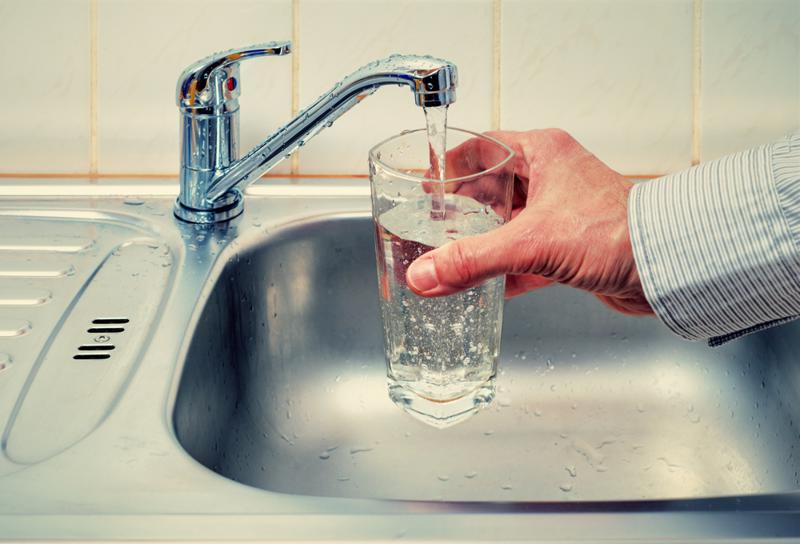The internet is a wealth of information, be it for oral health advice or virtually any other subject matter. Whether you’re looking to determine if electric toothbrushes are more effective than the traditional kind (they are!) or New Zealand’s largest export, you’ll be able to easily find it on the world wide web.
Yet at the same time, the internet can also be a wealth of misinformation. Fluoride is but one of a litany of examples. Found in everything from water to mouthrinse to toothpaste, fluoride is a mineral that is proven to be effective in warding off tooth decay. However, you may have seen articles or products that seem to suggest fluoride is dangerous or something that you should avoid.
It’s time to get to the bottom of this issue by separating fact from fiction when it comes to fluoride and its safety.
Myth No. 1: Water containing fluoride causes cancer
From common ingredients to household appliances, numerous things have been linked to cancer at one point or another. Fluoride is no exception. Fluoride has been erroneously referenced as carcinogenic for the better part of 20 years after researchers discovered the presence of bone tumors in rats that consumed water with high amounts of fluoride. Even though several studies have since debunked the original finding, which was small in scale and non-clinical in nature, the erroneous claim continues to be espoused.
Perhaps the best-known study comes from the U.S.-based National Cancer Institute. It found no indication of increased cancer risk associated with fluoridated drinking water after reviewing 125,000 diagnosed cancer cases in communities where fluoridated water was consumed.
Virtually every regulatory agency staunchly supports the utilisation of fluoride, including the New Zealand Dental Association.
 Many communities fluoridate their water because of the health benefits deriving from the mineral.
Many communities fluoridate their water because of the health benefits deriving from the mineral.Myth No. 2: Fluoridated water increases the risk of fluorosis
Just about anything can be consumed or done in excess — and that includes the use of fluoride. That’s what fluorosis is all about — the overconsumption of fluoride. Typically affecting young children, fluorosis develops when people take in very high amounts of fluoride over a prolonged period of time. That amount is generally anything beyond 2.5 milligrams per litre of water. While fluoride in safe doses helps to strengthen tooth enamel, in high volumes it has the reverse effect. Not only does it damage tooth enamel, it can also cause the enamel to darken and form pits.
The good news is that fluorosis is extraordinarily rare, largely because water seldom contains high levels of fluoride. It’s difficult to say with precision how much fluoride is in regular tap water, considering it comes from so many sources, but generally speaking, drinking water contains roughly 0.7 milligrams per litre. Not only do most sources of water contain safe levels of fluoride, but it typically only impacts very young children when their teeth are just starting to come in. Many children at this age aren’t consuming enough water for fluorosis to be a serious health risk, on the off chance their water does contain too much fluoride. Optimal levels are between 0.7 parts per million and 1 ppm.
Myth No. 3: Europe does not fluoridate its water
Since the European Union doesn’t mandate fluoridation, the thinking goes, then why should any other country? While it is true, many countries do not fluoridate the water supply available to the public, there are several countries throughout the continent that do fluoridate their water, at least to some degree. This includes the United Kingdom, Spain, Serbia and Ireland. And they do so because they know the array of oral health benefits that derive from fluoride, from warding off dental caries to strengthening tooth enamel.
Rarely does water naturally contain enough fluoride to be an effective deterrent to tooth decay, which is why New Zealand, the United States, Australia, Peru and several others add fluoride to tap water as a supplement through a process called salt fluoridation.
Myth No. 4: Adding fluoride to tap water is cost-prohibitive for communities
Nothing could be further from the truth on the cost front. In addition to the fact that an estimated 400 million people around the world regularly consume fluoridated water, according to a study conducted by the Royal Society of New Zealand, community water fluoridation can lead to better health outcomes by reducing the occurrence of tooth decay. As the report showed, fluoridation programmes wind up paying for themselves over time by reducing the household dental expenses associated with treating cavities. Also, the World Health Organisation is a staunch supporter of fluoridating water to reduce the prevalence of tooth decay.
City Dentist is an advocate of fluoride — and you should be too. If you have questions about it, its benefits and if you’re using enough, reach out and let us know. While you’re at it, schedule an appointment for a cleaning.
